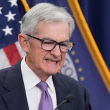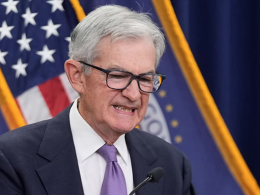As we look toward the opportunities and challenges to come in 2019, our base case is positive, with the expectation that global economic growth is likely to decelerate modestly, yet remain solid. We expect major economies to slow from above-trend growth toward on-trend growth, which should contain inflation, as major central banks normalize policy.
Downside and upside risks abound for 2019
We expect two key risks — protectionism and monetary policy tightening — to carry over from 2018 into 2019, and we see debt as another significant risk for 2019 and beyond. However, it is important to note that structural risks span trade, investment, technology and migration, as well as national security issues. Economic policies are becoming more explicitly politicized than at any time in the last several decades, threatening partial economic and financial fragmentation. Such risks may crystallize many years from now — or never — but associated uncertainty is already biting:
- Due to the uncertainty of Brexit, the UK has fallen from the fastest-growing to among the slowest-growing, highest-inflation economies in the G7.
- US tariffs and fiscal stimulus seem to have brought forward global trade and US gross domestic product growth.
- Italy’s rejection of eurozone fiscal rules has driven up its bond yields, contributing to a sharp growth slowdown and pressure on some banks due to losses on their bond portfolios.
This backdrop implies continued elevation in market volatility and perhaps another round of dollar strength, a combination that could tighten global financial conditions and slow global growth, especially in emerging market economies.
Upside risks deserve attention too. Cyclically, the oil price fall should support global demand by boosting spending among oil importers and reducing inflation pressures. Additionally, there is one silver lining within the risk of gradual/partial global economic fragmentation: Opportunities for diversification across countries, sectors and firms could rise as economic cycles may become less synchronized and growth models may diverge, leading to differentiated financial cycles and return possibilities.
Three key themes for 2019
1. Divergence — in both growth and inflation
Growth divergence. While we expect economic growth to remain solid, there has been greater divergence in the past year in terms of growth, and that is likely to continue. However, we expect growth divergence to be limited to some degree because the strength of US consumption and investment as well as the strength of Chinese stimulus is likely to pull along the rest of the world, at least somewhat.
Inflation divergence. We also expect some divergence in inflation in the coming year, with some economies experiencing upward pressure on wages as well as rising input costs. In addition, there could be more central bank divergence in the coming year. A cyclical challenge of 2018 may well persist in 2019: Europe, Japan and China may slow more than the US, leading their central bank decisions and market pricing to diverge from the US Federal Reserve (Fed). We expect the US expansion to mature and set a new record as the longest post-WWII expansion.
2. Disruption — monetary, geopolitical and technological
Monetary policy disruption. The Fed is likely to continue on its path of regular gradual rate hikes given its data-dependent monetary policy approach. In addition, the Fed is also conducting balance sheet normalization – a powerful tool in and of itself — at the same time as it is raising rates. The pre-set course calls for an increasingly larger amount of assets to be rolled off the Fed’s balance sheet each quarter. which means a significant possibility of market disruption (we have already seen US monetary policy disrupt emerging markets in 2018). In addition, there is the risk that, in October 2019, a more hawkish president replaces Mario Draghi at the European Central Bank, causing monetary policy normalization in the eurozone to accelerate, which may in turn cause greater volatility for eurozone stocks. In addition, more emerging markets economies are tightening — many doing so to keep up with the Fed – creating an overall environment that is less accommodative.
Geopolitical disruption. We have seen significant geopolitical disruption in recent months, and that is leading to structural fragmentation. For example, the rejection of Chancellor Angela Merkel’s leadership in various German regions, the UK’s difficulty in orchestrating its Brexit from the European Union, the US withdrawal from the Iran nuclear accord and the potential for Italy’s coalition government to disrupt not only Italy, but the European Union are all creating risks and contributing to volatility in one way or another. Of course, the greatest geopolitical risk is the potential for full-blown trade wars, which seems more likely than not at this juncture. This can place downward pressure on economic growth in a variety of ways: It increases economic policy uncertainty, which typically reduces business investment, and it increases input costs, which reduces profit margins or is passed onto the consumer, who in turn typically reduces their spending in other areas, resulting in demand destruction. Finally, it can disrupt supply chains and make economies less efficient and productive.
Technological disruption. We expect innovation and the so-called Fourth Industrial Revolution (or IR 4.0 as we like to call it), to maintain its trend-setting role across global and major national economies, with major implications for the distribution of global growth and the balance of power in the world. The potential for highly innovative firms to use technology to disrupt established businesses and business models is likely to continue — even if tech stocks come under further pressure as markets normalize, and the regulation of private data and the political role of social media platform firms come under greater regulatory oversight and political scrutiny. IR 4.0 also feeds back into geopolitical disruption and international competition. US-China trade tensions are only partly about trade; the underlying issues are about investment and global economic and political influence — attaining and maintaining the technological frontier as reflected in US concerns about national security and the protection of intellectual property. While such issues pose major risks to global economic and financial performance, the prospect of greater competition across countries and firms usually improves economic outcomes, creating opportunities in capital markets — albeit with meaningful downside risks.
3. Debt overhang
The world is becoming increasingly indebted. In a recent Global Financial Stability Report, the International Monetary Fund warned about the growing debt overhang occurring in different economies. This problem is widespread — impacting households, companies and countries — and becomes more burdensome as rates rise. For example, Canadian homeowners are showing signs of coming under pressure given that many have adjustable-rate mortgages. And the headwinds that many emerging markets economies have faced in 2018 can be at least partly attributed to higher borrowing costs. As monetary policy normalization continues and accelerates in coming years, this pressure is likely to increase. In addition to the short-term effects of debt pressure, there is a long-term effect as well: More money spent on servicing debt means less money that can be used for investment purposes — and that will impact longer-term economic growth.
Implications
As monetary policy normalizes, we believe capital markets will normalize as well. That means an erosion of the support that Fed policy has given to US stocks. In this environment, we expect a continued reduction in correlations among stocks as fundamentals become more important, as well as continued volatility.
In addition, normalization of US monetary policy suggests that US markets are prone to mean revert over the course of this unusual cycle, with downside risks stemming from trade tensions and geopolitics. Mean reversion would mean somewhat higher bond yields and discount rates for corporate cash flows, and would probably be reflected in higher corporate credit and equity risk premia. In addition, the potential for even some fragmentation caused by geopolitical disruption could result in higher volatility and perhaps even reduced corporate earnings power if US firms have less access to global markets, including China — which has until now been expected to continue as a major driver of global growth and a major source of revenue and earnings growth for both US and other multinational firms.
Even with these downside risks and volatility, we would expect US bonds to underperform US stocks, which we expect to post modest gains because of their greater exposure to the US economy and structurally greater insulation from frictions in trade and geopolitics.
In the eurozone and Japan, we expect continued support of risk assets because of more accommodative monetary policy, which should result in modest positive stock returns for those regions despite relatively low economic growth. In emerging markets, we expect the Fed-driven re-pricing to continue to spill over into global markets through a stronger dollar, higher US bond yields and tighter global financial conditions, pointing to more pressure on EM currencies and putting downward pressure on growth and upward pressure on inflation – a challenging scenario for EM equities, bonds and currencies. However, there is a significant possibility that by mid-year, the Fed is likely to have moderated its normalization as economic growth slows, which should result in some moderation in the investment implications mentioned above.
We expect unusual behavior to continue across commodities with the tendency to a strong dollar, global divergence from the US and the risk of global growth downgrades tending to pull the overall commodity complex down. Base metals are among the commodities more exposed to these downside risks, driven by the deleveraging-led slowdown in China and the general downward pressures on global capex due to trade frictions. Against that, however, geopolitical risks and trade tensions hold out the prospect of continued divergences across commodities, notably in oil, where tensions in the Middle East may cause renewed upward prices pressures. Soft commodities remain exposed to developments in US-China negotiations, with China’s tariffs on US agricultural exports representing a potential bargaining chip in any negotiations that might lead to a reprieve or succumb to a new round of tensions or tariff increases.
In this environment, we believe exposure to risk assets is important for meeting long-term goals – especially given that an upward bias for stocks continues to exist, although it is growing weaker. Attempting to mitigate downside risk will be critical, and that includes being well-diversified within equities and fixed income; that is also important given the divergence in growth in different economies. And, perhaps most important during this period of uncertainty, we believe that exposure to alternative investments can help with diversification and risk mitigation. That may include strategies such as market neutral portfolios and other lower-correlating asset classes, especially ones with income-producing potential.














